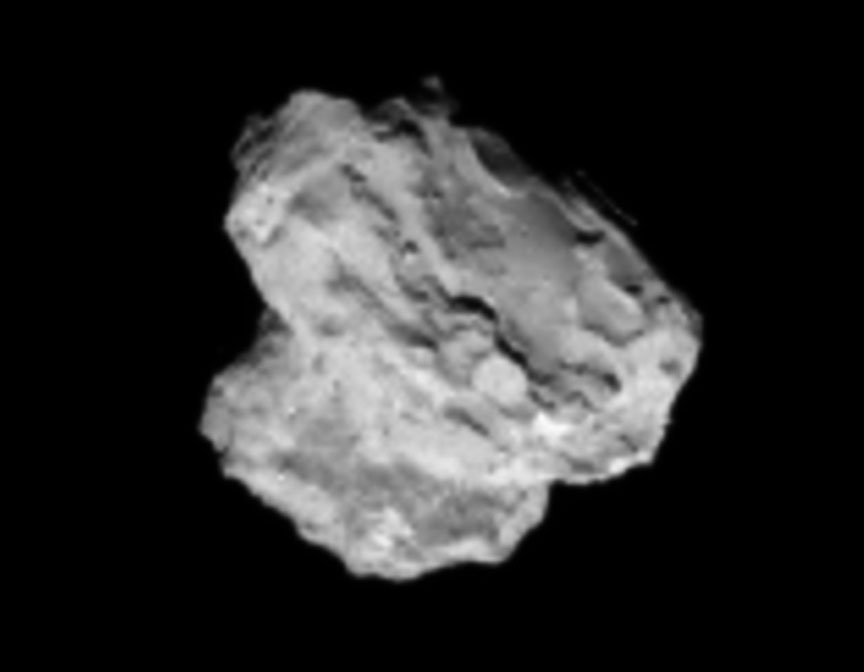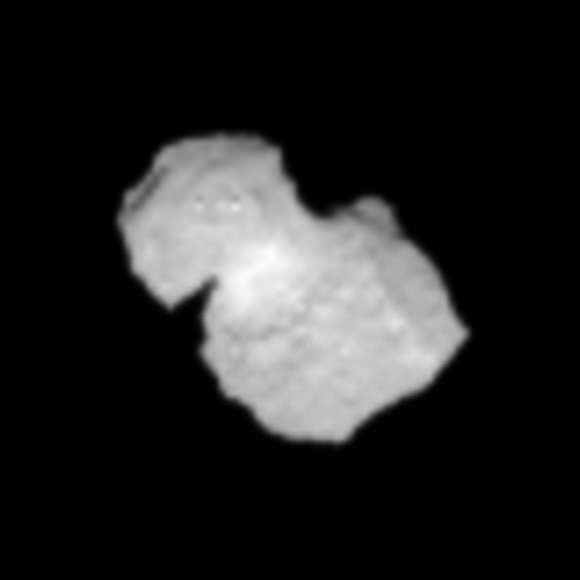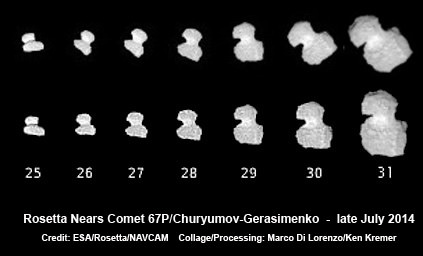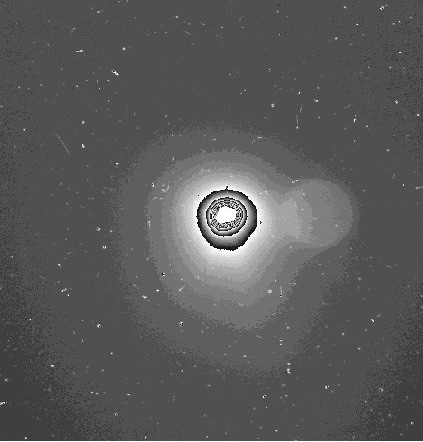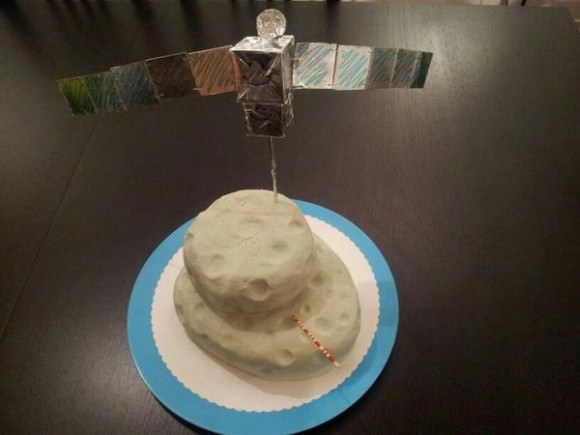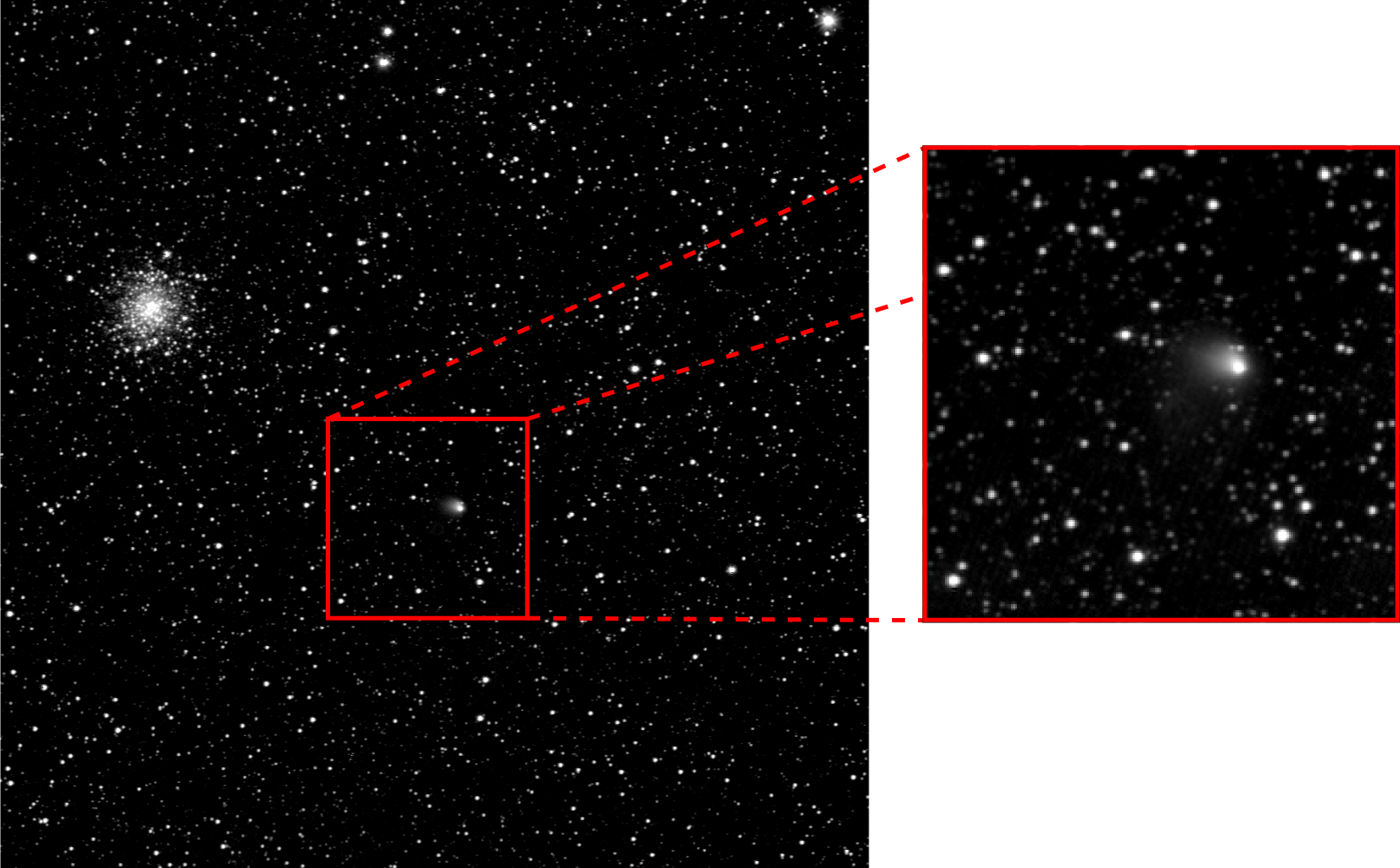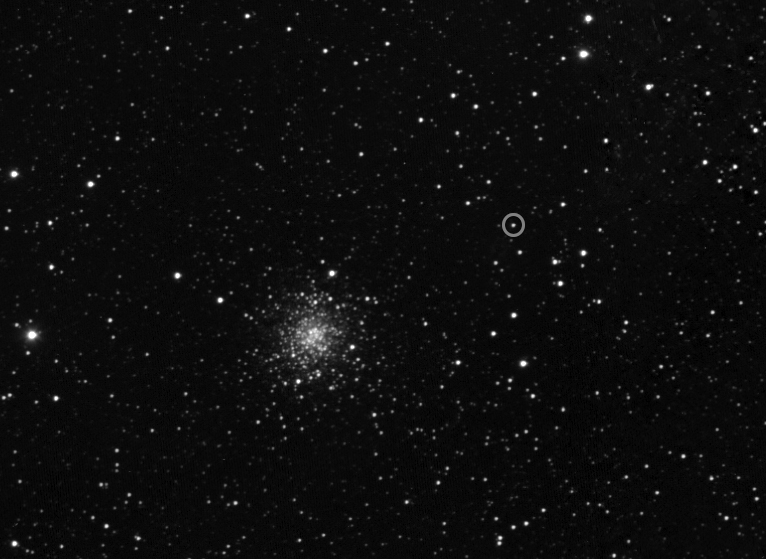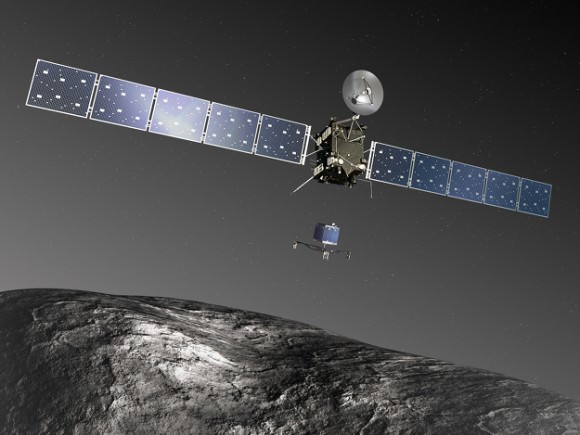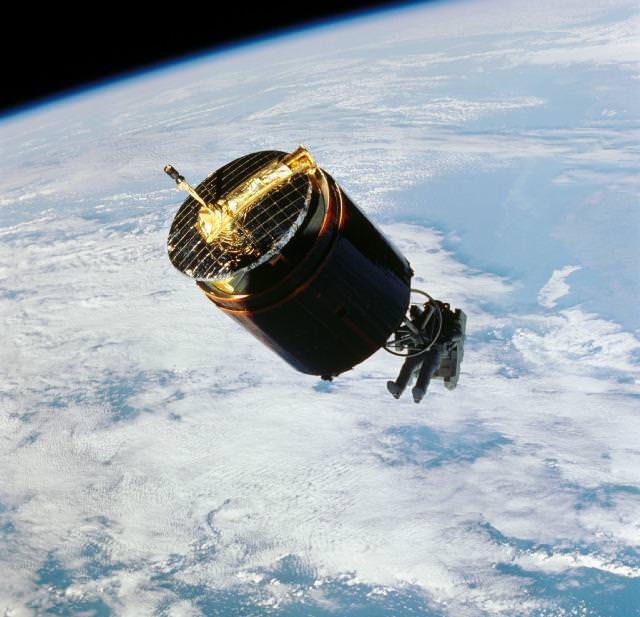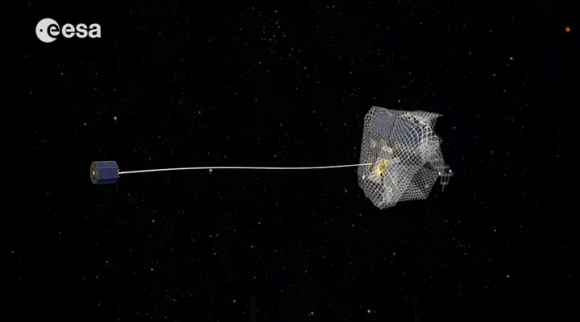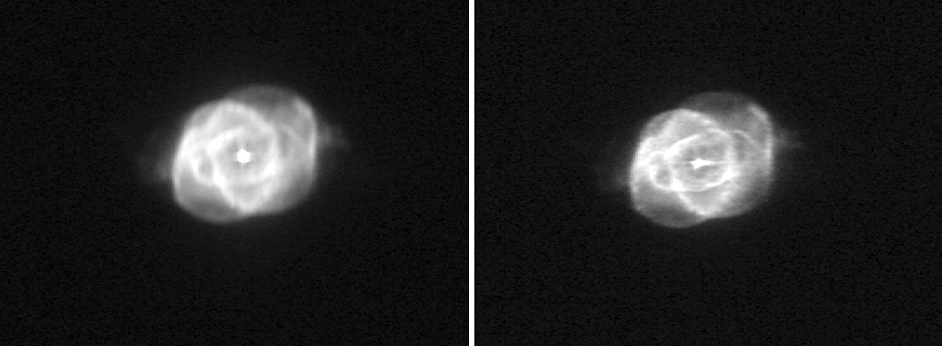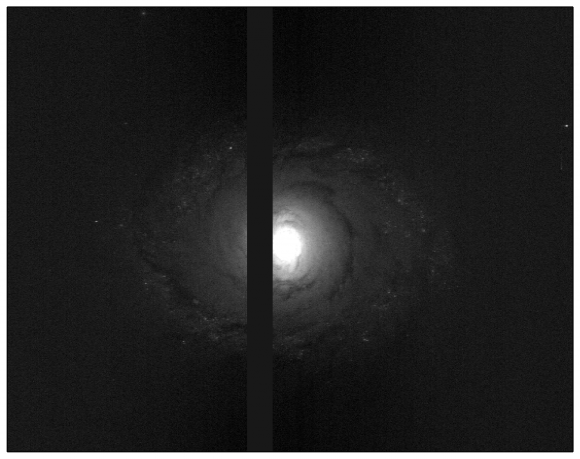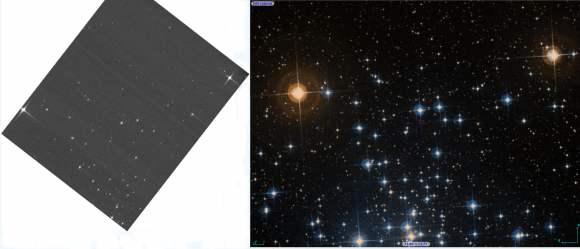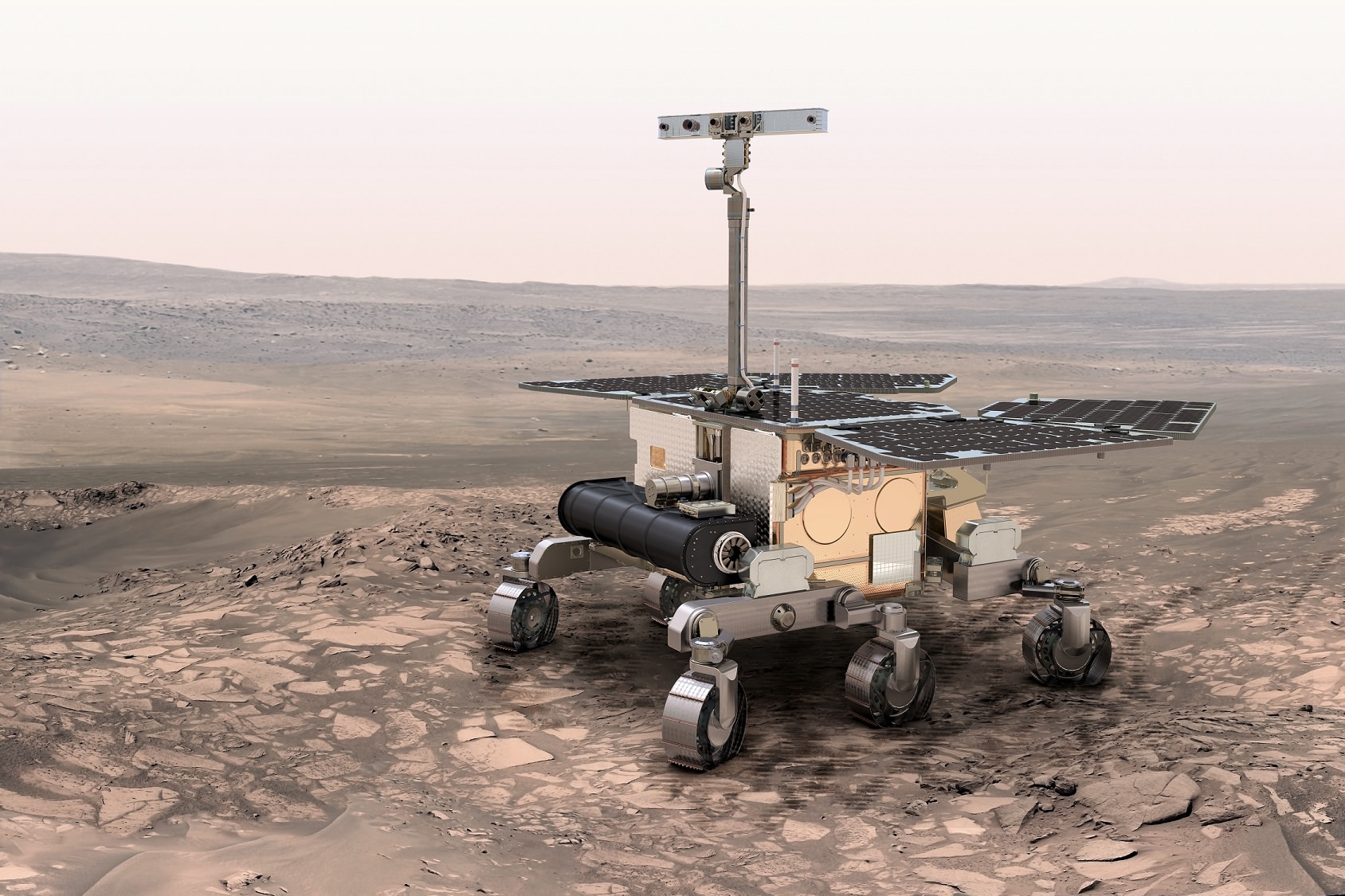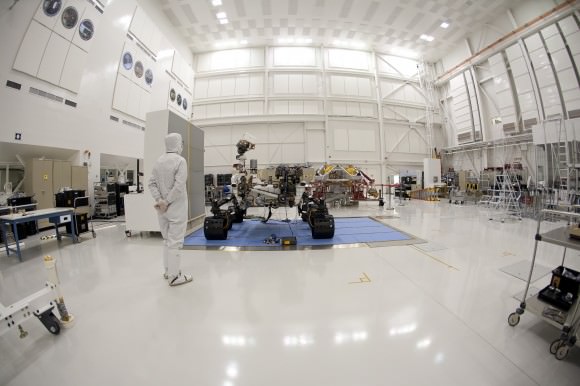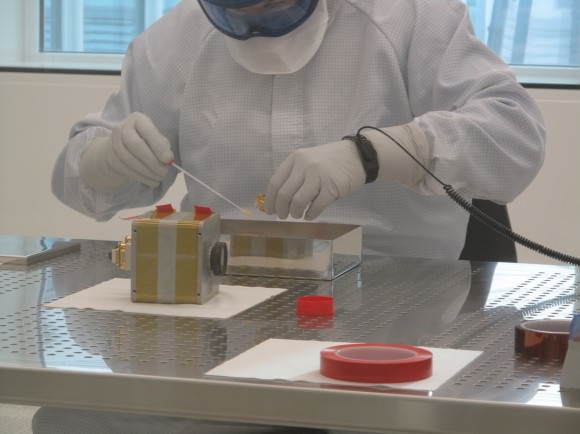The Rosetta comet chaser is currently less than 500 kilometers (300 miles) from its target destination, Comet 67P/Churyumov-Gerasimenko following today’s (Aug. 3) successful completion of the spacecraft’s critically important penultimate trajectory burn, just three days before its history making arrival at the comet on Aug. 6.
The European Space Agency’s (ESA) 1.3 Billion euro Rosetta spacecraft is now under three days away from becoming Earth’s first probe ever to rendezvous with and enter orbit around a comet after a decade long hunt of 6.4 billion kilometers (4 Billion miles) through interplanetary space. The gap is narrowing with each passing second.
The last trajectory firing is set for Aug. 6. Altogether the final pair of trajectory burns will reduce the spacecrafts speed by some 3.5 meters per second (m/s) with respect to the comet which is traveling at 55,000 kilometers per hour (kph).
The probes latest Navcam camera image shot on Aug. 2, 2014 from a distance of about 500 kilometers from comet 67P/Churyumov-Gerasimenko shows exquisite detail of the rubber ducky shaped body tumbling end over end. See above.
See below our mosaic of navcam camera approach images of the nucleus captured over the past week and a half of the mysterious two lobed comet, merged at a bright band in between.
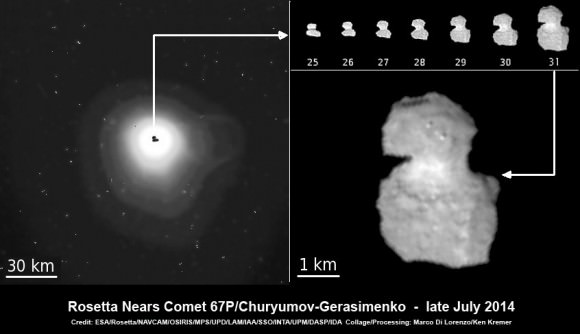
Credit: ESA/Rosetta/NAVCAM/OSIRIS/MPS/UPD/LAM/IAA/SSO/INTA/UPM/DASP/IDA Collage/Processing: Marco Di Lorenzo/Ken Kremer
In November 2014, the Rosetta mothership will attempt another historic first when it deploys the Philae science lander from an altitude of just 1 or 2 kilometers for the first ever attempt to land on a comet’s nucleus. The lander will fire harpoons to anchor itself to the 4 kilometer wide (2.5 mile) comet’s surface.
Together, Rosetta and Philae will investigate how the pristine frozen comet composed of ice and rock is transformed by the warmth of the Sun. They will also search for organic molecules, nucleic acids and amino acids, the building blocks for life as we know it.
Did life on Earth begin with the help of comet seeding? That’s a question the Rosetta science team seeks to help answer.
Today’s early morning thruster firing, officially known as the Close Approach Trajectory – pre-Insertion (CATP) burn, began as scheduled at 11:00 CEST (09:00 GMT) and was due to last for about 13 minutes and 12 seconds and bleed off some 3.2 m/s of spacecraft speed.
Although it ended a few seconds early, ESA reports that the CATP burn went well as engineers monitored the spacecraft communications at the European Space Operations Centre (ESOC), in Darmstadt, Germany via the agency’s 35 meter deep-space tracking station in New Norcia, Australia.
“All looks good,” says Rosetta Spacecraft Operations Manager Sylvain Lodiot, according to an ESA operations tweet.
CATP is part of the final series of ten orbit correction maneuvers (OCM’s) that culminates with the final thruster firing slated for Aug. 6 dubbed the Close Approach Trajectory – Insertion (CATI) burn.
“The CATI burn will reduce the relative velocity to about 1 m/s,” says Lodiot. That’s about equivalent to human walking speed.
The CATI orbit insertion firing will slow Rosetta to essentially the same speed as a comet and place it in orbit at an initial stand-off distance of about 100 kilometers (62 miles).
Rosetta will initially be travelling in a series of 100 kilometer-long triangular arcs while firings thrusters at each apex. Further engine firings will gradually lower Rosetta’s altitude about Comet 67P until the spacecraft is captured by the comet’s gravity.
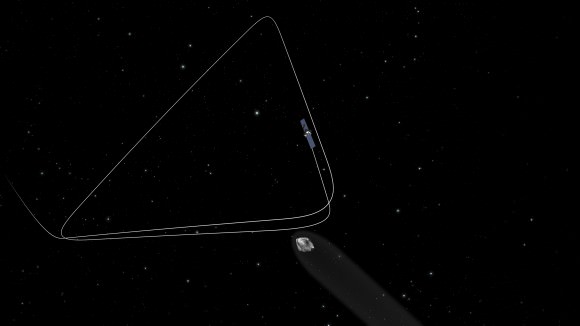
“All systems on the spacecraft are performing well and the entire team is looking forward to a smooth arrival,” says Lodiot.
It will study and map the wanderer composed of primordial ice, rock, dust and more and search for a suitable landing site for Philae.
The one-way signal time from Earth to Rosetta and Comet 67P is currently 22 minutes and 27 seconds as both loop around the Sun at a distance of some 555 million kilometres away from the Sun at this time. The short period comet is located between the orbits of Jupiter and Mars.
Rosetta will escort Comet 67P as they journey together inwards around the sun and then travel back out towards Jupiter’s orbit and investigate the physical properties and chemical composition of the comets nucleus and coma of ice and dust for some 17 months.
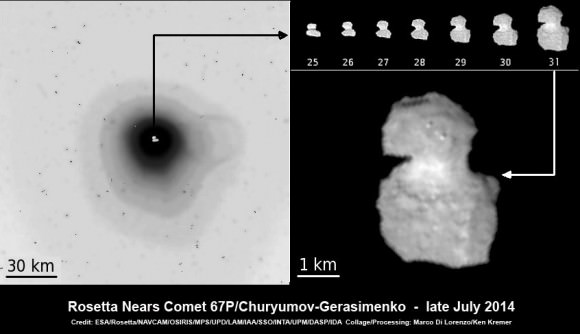
Collage/Processing: Marco Di Lorenzo/Ken Kremer
Rosetta was launched on 2 March 2004 on an Ariane 5 G+ rocket from Europe’s spaceport in Kourou, French Guiana.
You can watch Rosetta’s Aug. 6 orbital arrival live from 10:45-11:45 CEST via a livestream transmission from ESA’s spacecraft operations centre in Darmstadt, Germany.
Stay tuned here for Ken’s continuing Rosetta, Curiosity, Opportunity, Orion, SpaceX, Boeing, Orbital Sciences, commercial space, MAVEN, MOM, Mars and more Earth and Planetary science and human spaceflight news.

